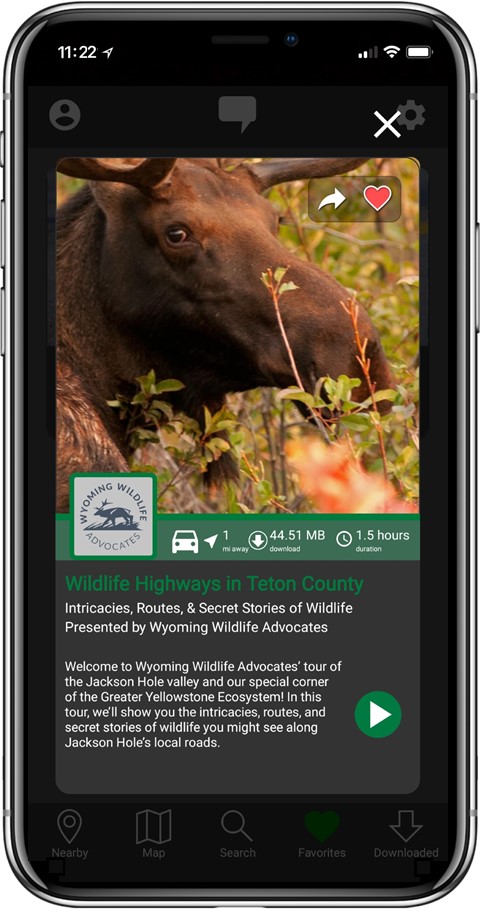We share the roads with wildlife of all shapes and sizes, including moose, elk, foxes, eagles, deer, squirrels, bears and more!
There are amazing opportunities to see wildlife up close, but also real dangers to both animals and humans. By being aware of where and how wildlife interact with highways in Teton County, you can help us all coexist in this special place.
In this FREE TravelStorysGPS audio tour, we’ll show you the intricacies, routes, and secret stories of wildlife you might see along Jackson Hole’s local roads. Our goal is to highlight the many wild residents and historical markers of this incredible landscape, and to inform when, where, and why to pay special attention to help reduce wildlife fatalities from vehicles on our roads.
“TravelStorysGPS, LLC, is a Wyoming-based, woman-owned SAAS company that develops highly accessible, trusted technology for presenting place-based, authentic content to orient, inform, and inspire people in real time as they travel.”
Download the TravelStorysGPS app on your Apple or Android device, or explore from home on your computer or tablet!
A Look Into The Wildlife Highways Audio Tour
Path of the Pronghorn
“The big, lone hill east of here is Blacktail Butte. On its backside is something very special: the Path of the Pronghorn. In 2008 this became the first federally designated migration corridor. Our local pronghorn population spends summers in Grand Teton National Park. Pronghorn are a small, graceful, tan and white animal with forked horns and distinctive black–and–white facial markings. They aren’t very tall – they only weigh around 100 pounds, so it’s essential that they hightail it outta here each fall before the snow gets too deep for them to move. Every autumn, about 500 pronghorn travel 125 miles from the park southeast over mountain passes and rivers, to the Green River Valley south of Pinedale, in one of the longest mammal migrations in the lower 48. Fawns born the previous spring learn the route to and from their winter home from their mothers – a route passed from generation to generation for thousands of years. In the spring, these animals head north again, on the exact same route.”
Thank you to our partners for making this possible






